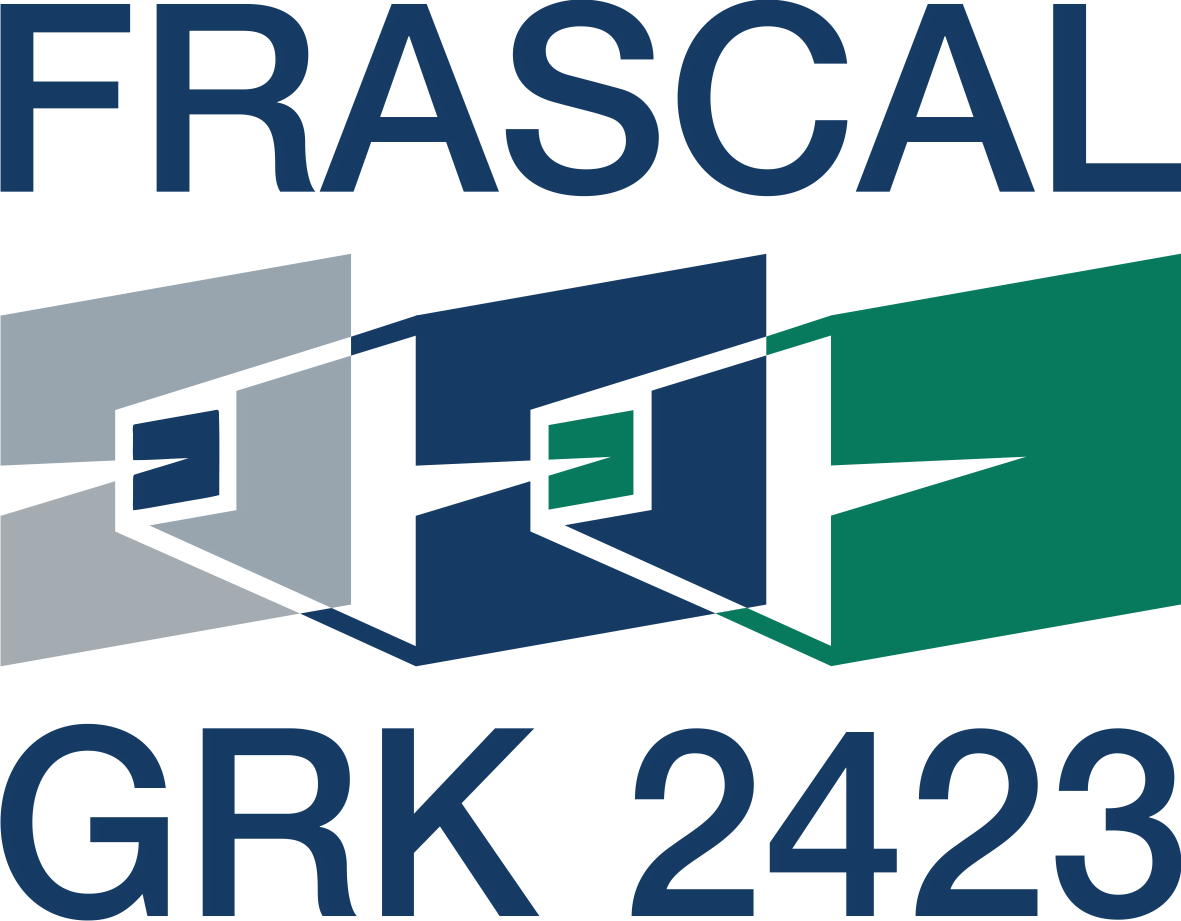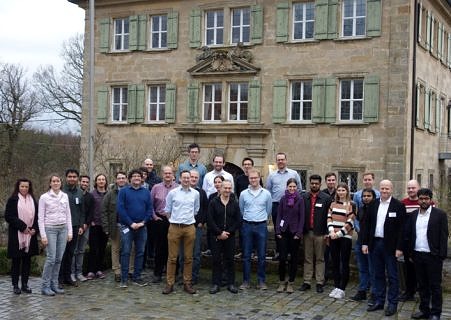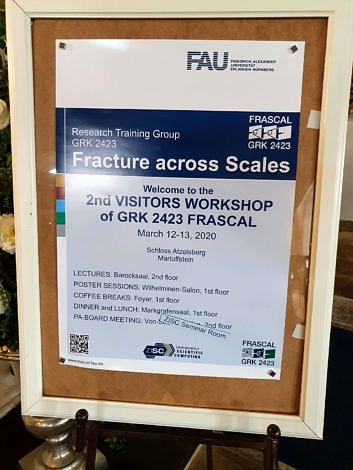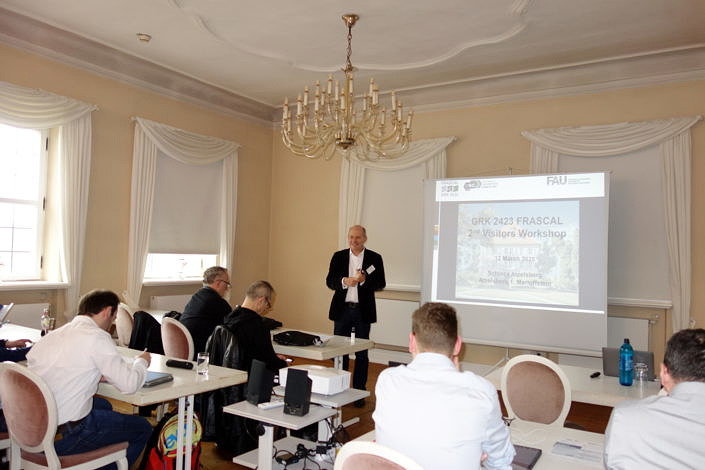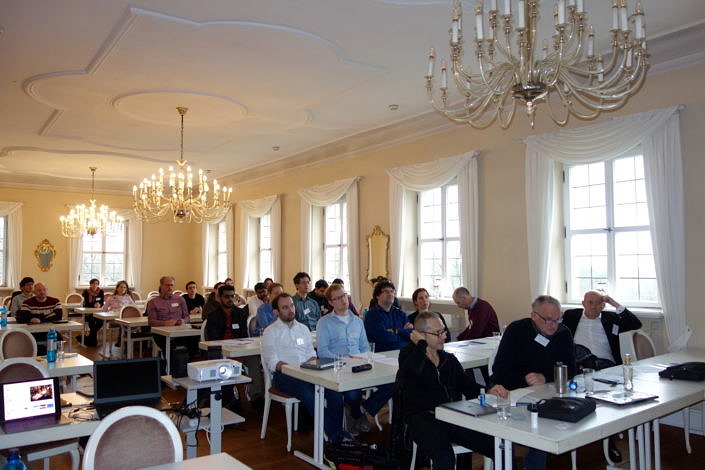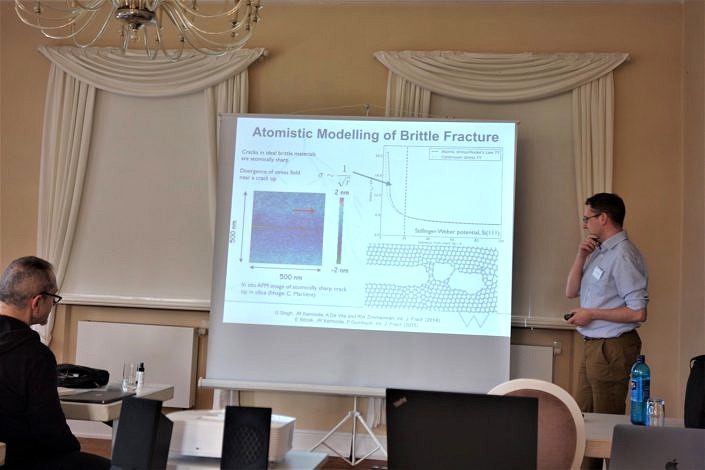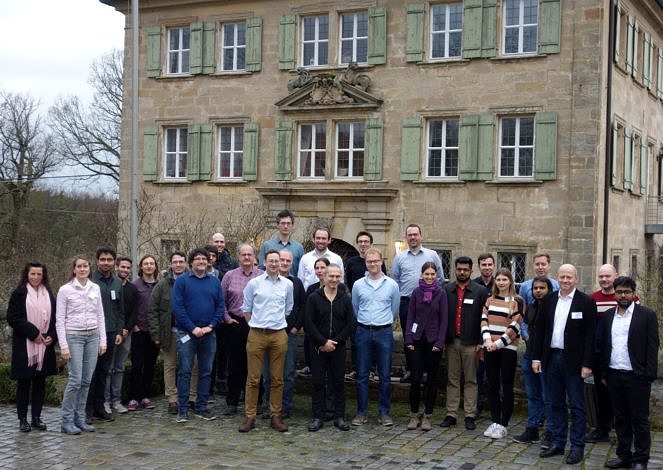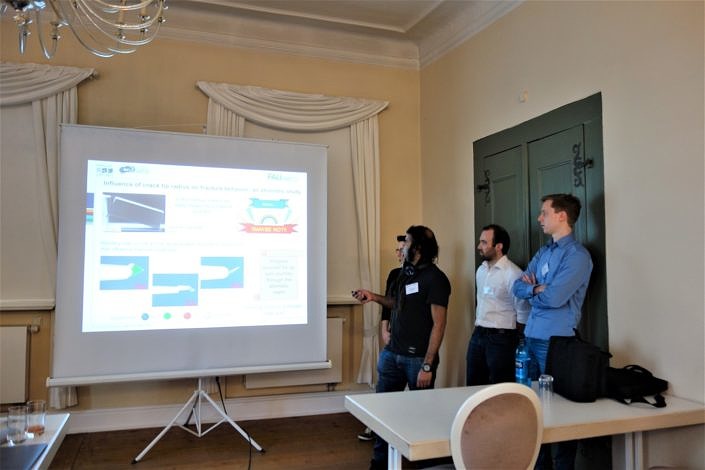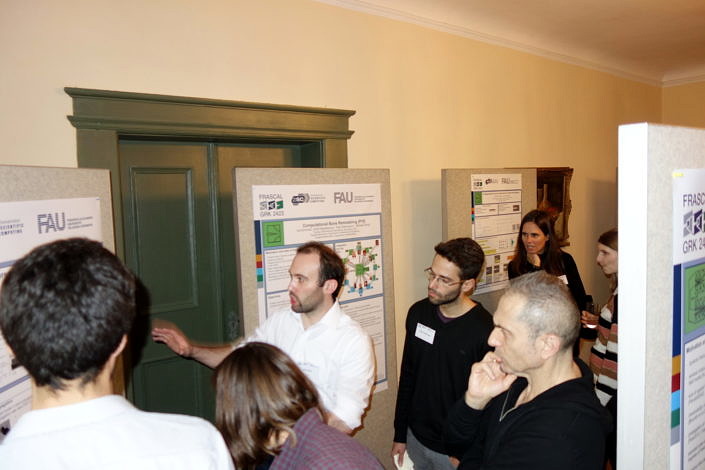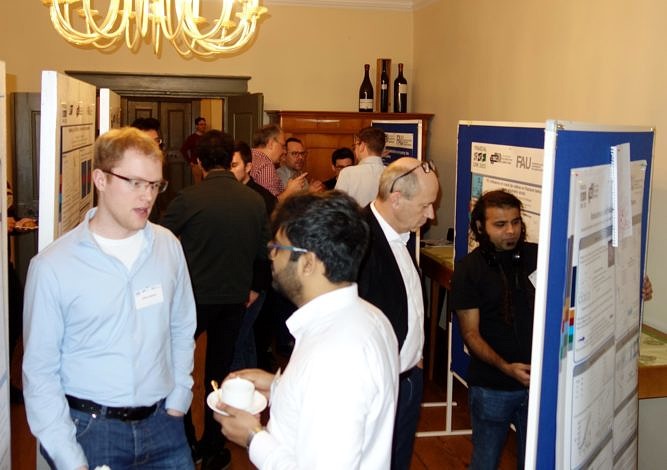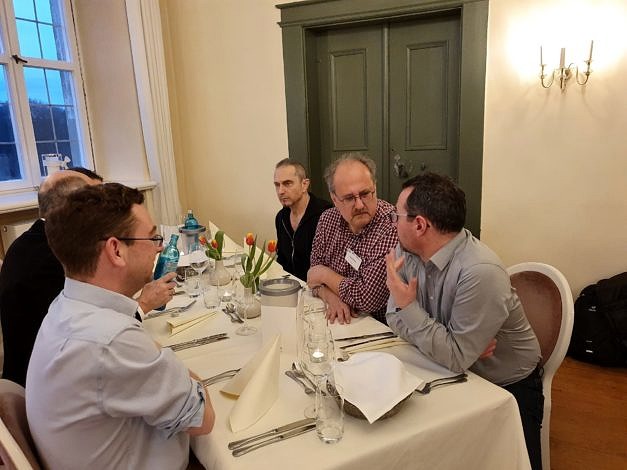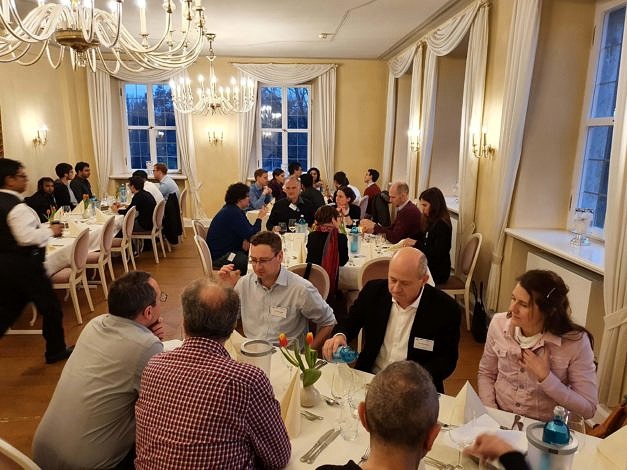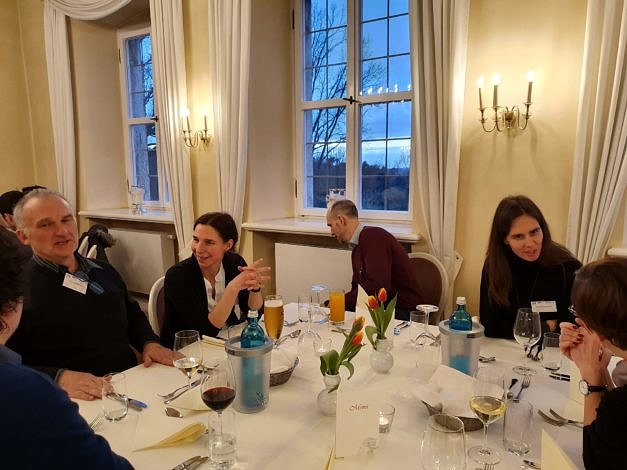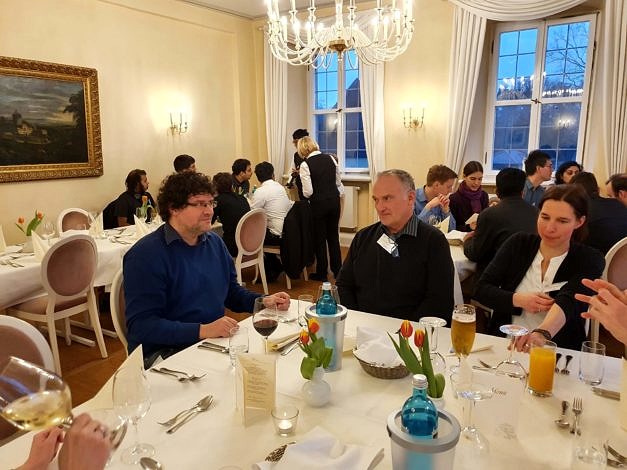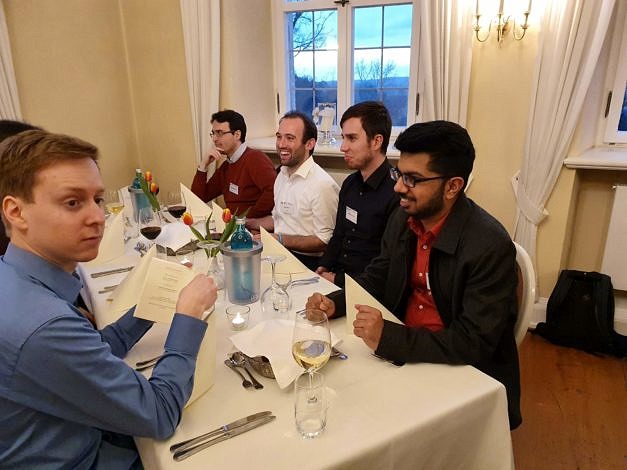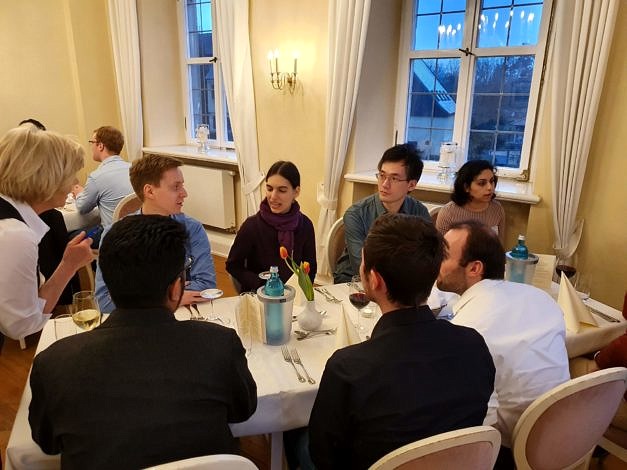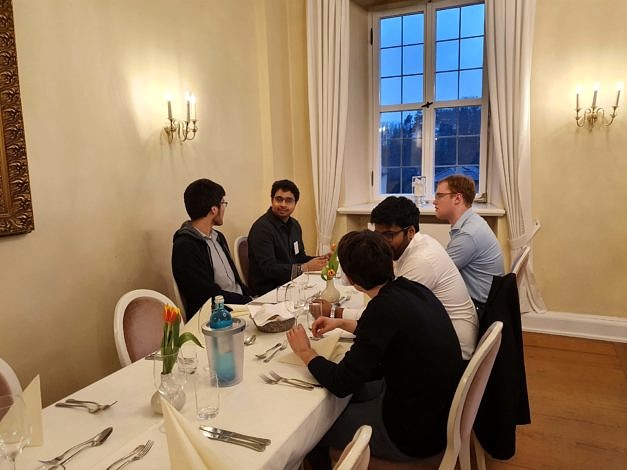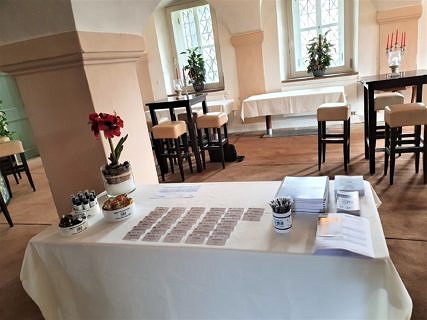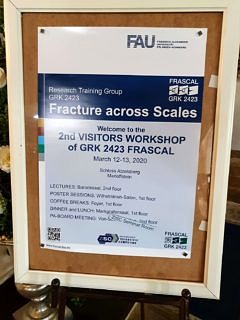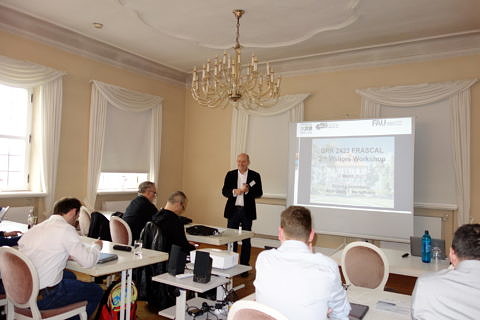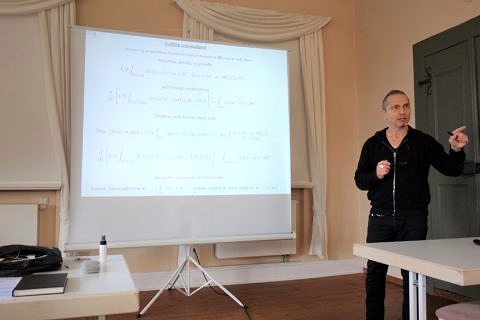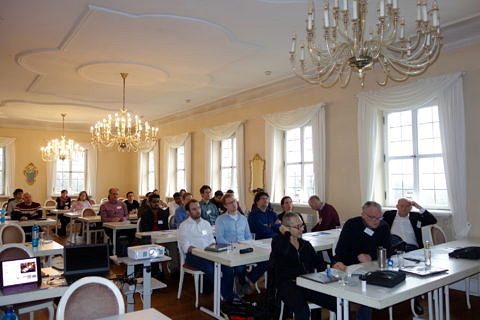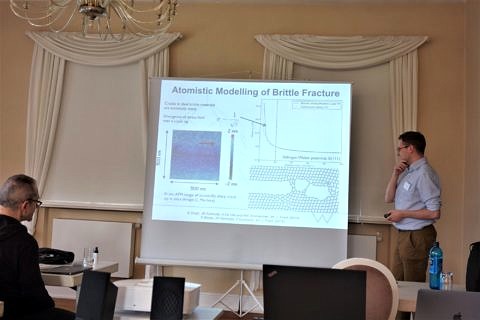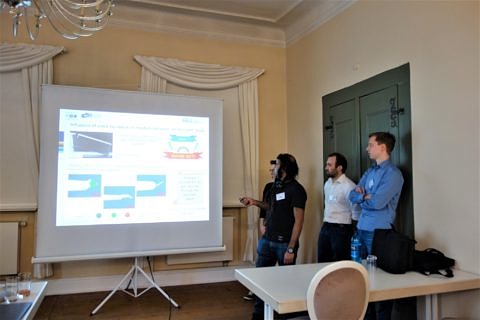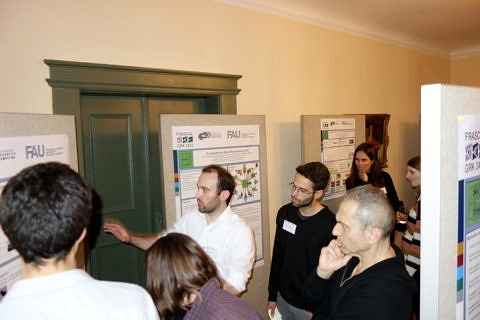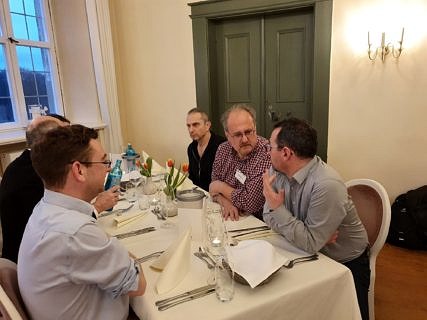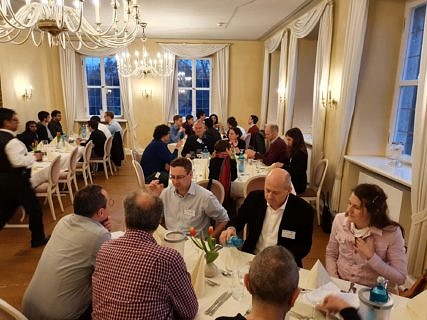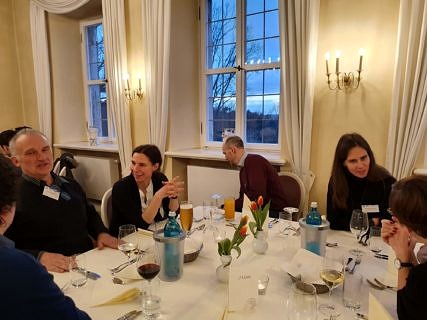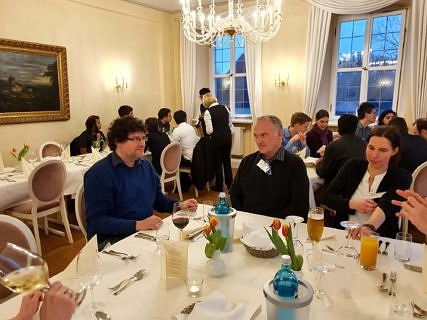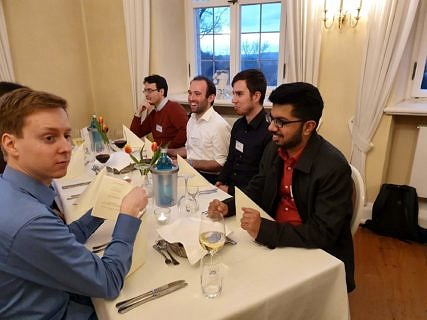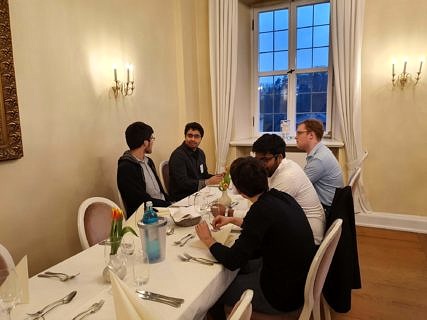2nd Visitors Workshop on 12 March 2020 at Schloss Atzelsberg, Marloffstein
On March 12th, 2020 the 2nd Visitors Workshop of the GRK 2423 FRASCAL took place in the beautiful castle of Atzelsberg near Erlangen.
It should be emphasized that the planned programme of the workshop would have been two days long, with lectures by six internationally renowned scientists in the field of fracture behaviour. During the coffee breaks, two poster presentations of all FRASCAL doctoral researchers and associates were to take place. Due to the rapidly changing and unpredictable situation of the corona crisis at that time, the programme had to be constantly adapted and modified in the few days before the workshop began. Some speakers were unable to travel to the workshop because the flights were cancelled or stayed away due to health concerns. One and a half days before the workshop started, it was then decided to reduce the programme to just one day, with three guest speakers and one poster session. The updated program can be found here.
The workshop started early Thursday afternoon with a welcome to all participants by the speaker of the GRK 2423 FRASCAL, Professor Paul Steinmann, and a short presentation of the FRASCAL programme.
The first speaker was Gilles Francfort (Department of Mathematics, University 13, Paris, France and visiting professor at the Courant Institute, New York University, New York, USA). In his lecture entitled „Initiation and kinking: The fracture lines of fracture“, he addressed in particular three major issues: crack initiation, crack path, and smoothness of the crack evolution.
James Kermode from the Warwick Centre for Predictive Modelling (University of Warwick, Coventry, UK) spoke in his lecture „Multiscale modelling of materials chemomechanics: Brittle fracture, dislocation glide and beyond“ about the application of materials modelling algorithms to make quantitative predictions of chemomechanical materials failure processes where stress and chemistry are tightly coupled.
After these two stimulating lectures, all participants of the workshop gathered in front of the castle for a group photo in the fresh March weather.
The subsequent coffee break began with a so-called “Poster Blitz” session: Each doctoral researcher had the opportunity to draw attention to her or his poster in a one-minute oral presentation, thus arousing the audience’s curiosity.
During the extended coffee break and parallel poster session, the posters offered the opportunity to discuss the FRASCAL projects and the latest results.
After the break, everybody was eagerly awaiting the presentation of Franz-Josef Ulm from MIT, Cambridge, MA, USA, who unfortunately had to cancel his participation only a few hours before the workshop started due to the shortly before changed travel conditions to the USA. Nevertheless, we managed to get him to join us live to the castle via a web conference, and he was able to share his ideas and new approaches about “Fracture mechanics in the grand-canonical ensemble” with us.
Finally, all participants were invited to a conference dinner, where, in addition to culinary delights, interesting technical discussions took place and even ideas and starting points for new collaborations were found.
